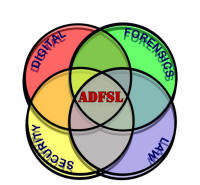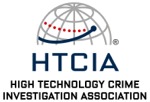
In the contemporary digital landscape, data stands as the cornerstone of organizational functionality, driving a myriad of operations, fostering innovation, and offering a competitive edge. The burgeoning volume of data generated and stored by organizations underscores the paramount importance of safeguarding this invaluable asset from unauthorized access, disclosure, alteration, or destruction. Data Loss Prevention (DLP) emerges as a comprehensive approach, encompassing a suite of strategies and solutions dedicated to ensuring the security of sensitive data, thwarting unauthorized access and distribution, and bolstering compliance with pertinent regulations.
Embarking on the journey to robust DLP necessitates a foundational understanding of the diverse forms and sources of data loss. Data loss can manifest from a spectrum of sources including human error, malicious insider activity, cyberattacks, or natural disasters. A thorough comprehension of these potential risks and vulnerabilities stands as the inaugural step in the formulation of a resilient DLP strategy.
DLP strategies
Comprehensive risk assessment
Begin with an exhaustive risk assessment. Conduct a detailed analysis to understand the nature, location, and sensitivity of the data your organization holds. Employ advanced analytical tools and methodologies to continuously monitor and assess the risk landscape. Ensure that your DLP strategies are dynamic, evolving concurrently with emerging threats and vulnerabilities. Utilize threat intelligence platforms to stay abreast of the latest cyber threats and vulnerabilities.
Data classification
The strategy of data classification holds paramount significance in the realm of DLP. It involves the meticulous identification and categorization of data based on its sensitivity and relevance to the organization. The implementation of a robust data classification policy, complemented by the utilization of automated tools for data classification, stands as a best practice in this domain. Moreover, the regular updating of the classification in tandem with the evolution of data is imperative for sustained data security.
Access controls
Access control stands as a linchpin in the DLP architecture, ensuring that sensitive data remains accessible solely to authorized personnel, thereby significantly diminishing the risk of unauthorized data access and potential security breaches. The assiduous application of the principle of least privilege, coupled with the deployment of robust authentication and authorization mechanisms, emerges as a paramount practice in this arena. Additionally, the continual review and refinement of access controls are essential to seamlessly adapt to evolving data access needs and emerging threats.
Advanced data encryption
Encryption acts as a formidable shield in the protection of data, transmuting it into an unreadable format, decipherable only with a legitimate decryption key. The unwavering encryption of data, both in its resting and transit states, is a fundamental practice in DLP. The adoption of robust encryption algorithms, complemented by sound key management practices, further amplifies the efficacy of encryption in safeguarding data against unauthorized access.
Regular audits and monitoring
The strategy of regular audits and monitoring is indispensable in the continuous oversight and scrutiny of data access and usage. Conducting regular security audits and implementing real-time monitoring and alerting systems stand as best practices in this domain, ensuring timely detection and mitigation of potential data security issues.
Incident response plan
The formulation of an incident response plan is essential in ensuring organizational preparedness for any data loss incidents. The development and documentation of a comprehensive incident response plan, complemented by regular testing and updating, ensure that the organization is equipped to effectively address and mitigate data loss incidents.
DLP solutions
Beyond the aforementioned strategies, the integration of DLP software solutions offers an additional layer of protection. DLP solutions are adept at monitoring, detecting, and blocking potential data breach or transmission, ensuring the confinement of sensitive data within the corporate network.
Network DLP solutions
Network DLP solutions are dedicated to the monitoring and control of data in motion. Opting for a solution that seamlessly integrates with the existing network infrastructure, and possesses the capability to monitor diverse forms of data transmission, is essential for effective network data protection.
Storage DLP solutions
Storage DLP solutions focus on the protection of data at rest. Ensuring compatibility with various storage solutions and implementing regular scans and audits are essential practices in enhancing the security of stored data.
Endpoint DLP solutions
Endpoint DLP solutions are tailored for the monitoring and control of data on end-user devices. Ensuring compatibility with various operating systems and devices, and providing remote control and monitoring capabilities, are essential for the effective protection of endpoint data.
Additional insights
Pattern Matching and Fingerprinting: DLP systems utilize pattern matching and fingerprinting to detect sensitive data patterns, such as Social Security Numbers or credit card numbers, ensuring the prompt identification and protection of such data.
Incident Response and Remediation: Defining and implementing an incident response and remediation strategy is crucial for effective DLP, ensuring preparedness and swift action in the event of a data breach.
Vendor Research and Proof of Concept: Engaging with multiple vendors and conducting a proof of concept exercise ensures the selection of a DLP solution that aligns with organizational needs and expectations.
By incorporating these additional insights, organizations can further bolster their DLP strategies, ensuring a comprehensive, robust, and effective approach to data loss prevention, safeguarding organizational data integrity and security.
DLP best practices
Effective DLP implementation hinges on adherence to best practices. Identifying the organization’s ‘crown jewels’ or most sensitive and valuable data is the first step. Engaging with multiple vendors, defining incident response and remediation strategies, and performing a proof of concept exercise are crucial. It is also essential to identify DLP stakeholders and support teams, ensuring continuous communication and updates regarding the state of the DLP program.
Crafting a resilient DLP strategy
In conclusion, the success of a DLP program is contingent on a well-planned and meticulously implemented DLP strategy. Understanding the organization’s business model, identifying critical data, and ensuring the alignment of DLP components with organizational needs are pivotal. A robust DLP strategy, complemented by adherence to best practices and continuous monitoring and assessment, ensures comprehensive data protection, safeguarding the organization against data breaches and the associated financial and reputational repercussions.









